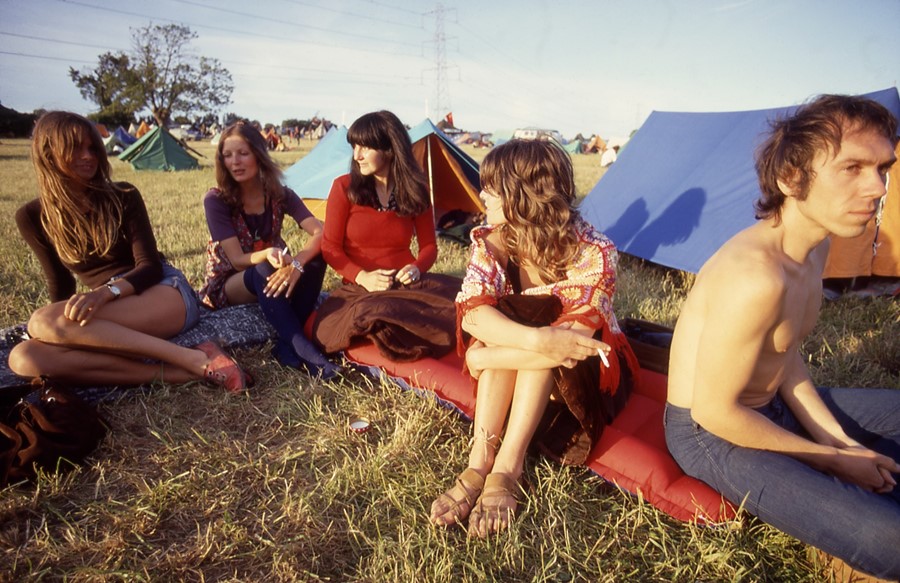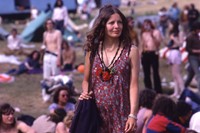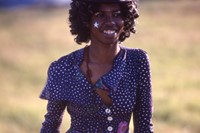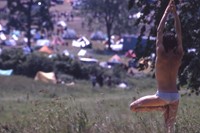Paul Misso’s new IDEA-published book captures the “tangible, crackling energy” of Glastonbury Festival in 1971. Here, he talks about why that first trip there changed his life forever
When photographer Paul Misso set off for one of the first Glastonbury Festivals in 1971, he had all the elements, to use the modern parlance, for an epic weekend: a motorhome fully stocked with food, alcohol and “probably dope, I can’t remember”; a famous film actress of the period, Julie Christie, who would go on to star in Don’t Look Now, and 250 rolls of Kodak film, “the price of which was enough to buy a house in those days,” he tells AnOther over the phone from his home in Sussex. Supplies were from legendary film director Nicolas Roeg, who was shooting a documentary about the festival and its attendant counterculture. Roeg thought the presence of Christie would enhance the footage and she invited her friend Misso to be her driver for the trip, suggesting to Roeg that he commission Misso (an established fashion and advertising photographer) to shoot stills to accompany the film. He remembers taking the assignment incredibly seriously, feeling “a huge sense of responsibility. I had to capture the moment as best I could for Nick, who I absolutely revered as an artist.”
“As we arrived, everyone was smiling and coming up saying, ‘Welcome, great to see you!’ There was a sense of anticipation and electricity in the air,” Misso continues. There was, he added, literal electricity from “huge pylons that crisscrossed the farm. When it rained, the wires sparkled and crackled – there was a tangible sense of energy. The music performances were simply another level on top of the collective excitement.” He stayed for ten days, capturing everything from the set-up of the stage to the days and nights of festivities, rich in bushy hairdos, nudity, mud and countless roll-up cigarettes. These photos have now been published by IDEA for the first time in a new book, In The Vale of Avalon: Glastonbury Festival 1971.
52 years ago, nobody heard about Glastonbury Festival through the media, let alone BBC broadcasts, and there was no anxious scramble for tickets back in winter since admission was free, promoted via word of mouth or via the hippie grapevine. As Misso describes his social and professional circle: “London was a very small place in the 60s and 70s. Everybody who’d been to art school or worked in media or music knew each other, from the Royal College of Art dances or the Roundhouse.” He explains that people brought and swapped food and drink as there was nothing for sale.
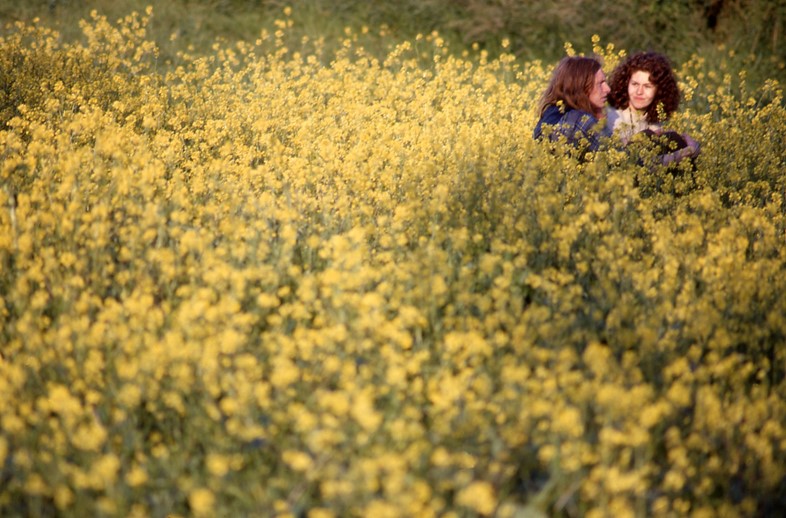
Misso was only a few degrees of separation from the driving forces of the festival, Andrew Kerr, the “hippie aristo” who wanted to set up a non-commercial, spiritual festival; Arabella Churchill, who founded the Theatre and Circus Stage and Bill Harkin, the architect who designed the unique Pyramid Stage and later married Misso’s partner of the time, model Dee Palmer. Many elements of the festival were designed around mystical and energetic properties. The date coincided with the summer solstice, and across the site of the farm ran a ley line connecting to Stonehenge (Kerr’s original proposed festival location). The theory of sacred geometry – that certain geometric shapes and their mathematical formulas form proof of a divine creator (hence the stage shaped like a pyramid) – and English mythology all influenced the founders. Misso says, “All of us would-be hippies read John Michell’s book, The View Over Atlantis, about the myths and legends of old England. To me there’s absolutely no question that Glastonbury is a magical place.” Andrew Kerr wrote at the time: “it was here St Joseph of Arimathea is said to have brought his nephew Jesus … here that King Arthur and the Knights of the Round Table are said to have carried out their quest for the Holy Grail … here that the ancient druids are said to have been initiated into the secrets of the universe.”
After developing the film and editing the best of his work, Misso held a slideshow of images for Roeg, who, with misty eyes, admitted, “Paul, you got it and I didn’t.” Eventually Roeg shelved the film, “so my pictures became obsolete, and ended up in a drawer for many years,” says Misso, who put on regular slideshows of the shots for friends at his flat in the years following the events.
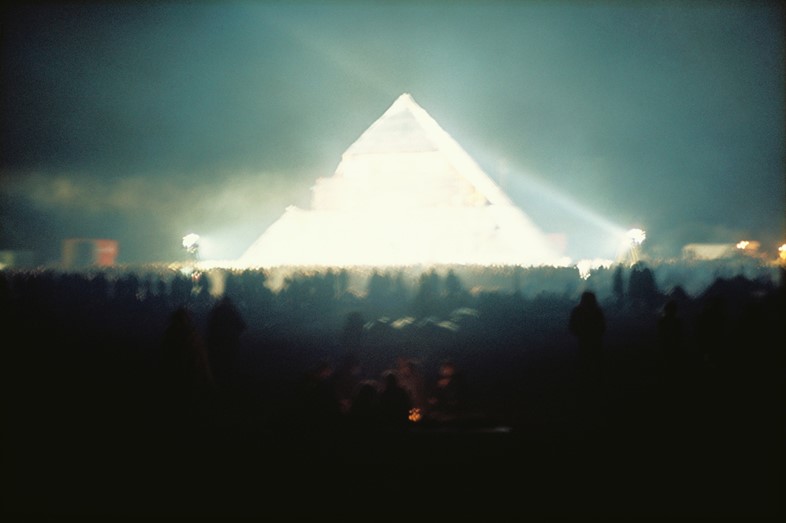
That visit ignited Misso’s enduring love affair with the festival – since 1971, he has returned most years. He describes its various iterations, from Michael Eavis’ alliance with CND (the Campaign for Nuclear Disarmament, or Ban the Bomb) during the 80s, to its environmental and charitable work, in line with Kerr’s original vision that people would reconnect with nature and spirituality. “I feel like people want me to say that modern Glastonbury has been ruined, that I don’t like it as much, but I still love it. It has the same spirit it had in ‘71. And it still represents the counterculture, particularly in areas like the Green Fields and Healing Fields,” he says.
Although his pictures have not been published until this year, Misso believes the assignment still changed the course of his life. “After Glastonbury ‘71, I realised that I didn’t want to only work for money, and continued to schedule passion projects as well as commercial ones. From a project with Brian Jones [of Pink Floyd] to shooting volcanoes in Iceland, I make time for work that’s important to me. Next year will be my 80th [birthday] and it really keeps you alive when you love what you do.”
In The Vale of Avalon: Glastonbury Festival 1971 by Paul Misso is published by IDEA and is out now.
